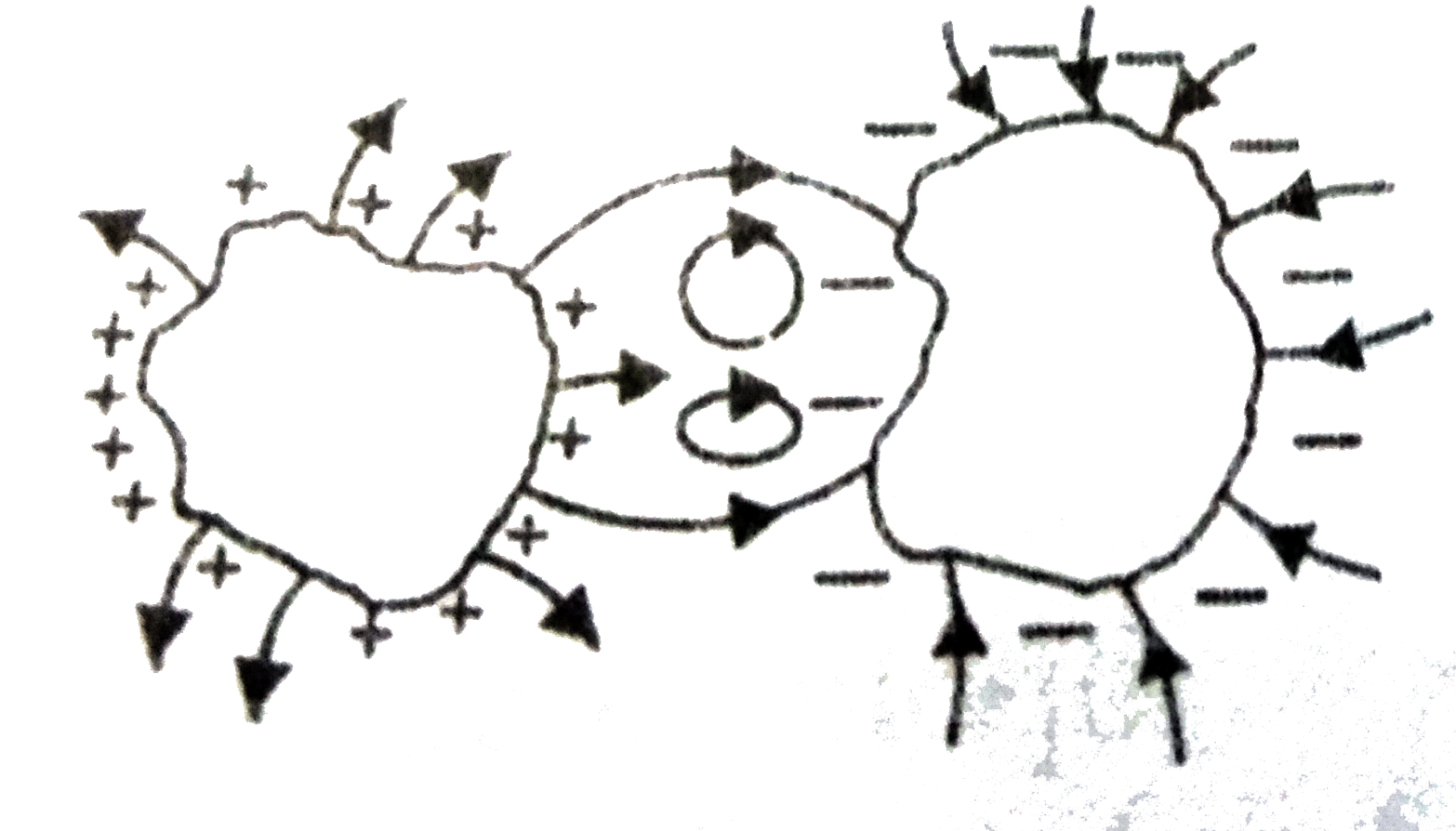Consider the four field patterns shown. Assuming there are no charge in the regions shown, which of the patterns represent a possible electrostatic field?
a.A
b.B
c.C
d.D
The correct Answer is:B
To determine which of the four field patterns represents a possible electrostatic field, we need to analyze each option based on the properties of electric field lines. Here’s the step-by-step solution:
Step 1: Understand the properties of electric field lines
- Electric field lines originate from positive charges and terminate at negative charges.
- Electric field lines cannot cross each other.
- Electric field lines do not form closed loops; they extend infinitely in space.
Step 2: Analyze each option
Option A:
- In this option, electric field lines are shown originating and terminating at the same point.
- Conclusion: This is not possible because field lines cannot both originate and terminate at the same point. Therefore, Option A is incorrect.
Option B:
- In this option, the electric field lines are shown originating from a positive charge and terminating at a negative charge.
- Conclusion: This is consistent with the properties of electric field lines, as they can originate from a positive charge and terminate at a negative charge. Therefore, Option B is correct.
Option C:
- In this option, electric field lines are shown originating in a region where it is stated there are no charges.
- Conclusion: If there are no charges in the region, electric field lines cannot originate from that region. Therefore, Option C is incorrect.
Option D:
- In this option, electric field lines are shown forming a closed loop.
- Conclusion: Electric field lines cannot form closed paths; this is a characteristic of magnetic field lines. Therefore, Option D is incorrect.
Final Conclusion:
Based on the analysis, Option B is the only option that represents a possible electrostatic field.
---
- Electric field lines originate from positive charges and terminate at negative charges.
- Electric field lines cannot cross each other.
- Electric field lines do not form closed loops; they extend infinitely in space.
- In this option, electric field lines are shown originating and terminating at the same point.
- Conclusion: This is not possible because field lines cannot both originate and terminate at the same point. Therefore, Option A is incorrect.
- In this option, the electric field lines are shown originating from a positive charge and terminating at a negative charge.
- Conclusion: This is consistent with the properties of electric field lines, as they can originate from a positive charge and terminate at a negative charge. Therefore, Option B is correct.
- In this option, electric field lines are shown originating in a region where it is stated there are no charges.
- Conclusion: If there are no charges in the region, electric field lines cannot originate from that region. Therefore, Option C is incorrect.
- In this option, electric field lines are shown forming a closed loop.
- Conclusion: Electric field lines cannot form closed paths; this is a characteristic of magnetic field lines. Therefore, Option D is incorrect.
Based on the analysis, Option B is the only option that represents a possible electrostatic field.
Topper's Solved these Questions
- TEST PAPERSBOOK - RESONANCE ENGLISHCHAPTER - TEST PAPERSEXERCISE - PART - II PHYSICS
106 Videos
- SIMPLE HARMONIC MOTION BOOK - RESONANCE ENGLISHCHAPTER - SIMPLE HARMONIC MOTION EXERCISE - Advanced Level Problems
13 Videos
- TEST SERIESBOOK - RESONANCE ENGLISHCHAPTER - TEST SERIESEXERCISE - PHYSICS
130 Videos
Similar Questions
Knowledge Check
Which of the following curves represent electrostatic field lines correctly?
A B
B C
C D
D
Which expression represents the pattern in the table ?
 A−3nB−3n+6Cn+2D3n
A−3nB−3n+6Cn+2D3n
What is the example of inheritacne pattern shown

View SolutionConsider the uniform magnetic field shown:

Starting from point P and without leaving the region of magnetic field, is it possible to choose a closed path (that is, a path that returns to P) for which the line integral of the magnetic field is nonzero?
View SolutionConsider the Gaussian surface that surrounds parts of the charge distribution shown in figure. Then the contribution to the electric field at point P arises from charges

View SolutionWhich of these is/are representing electrostatic field? (x and y are space coordinates)
View SolutionFind the direction of electric field at P for the charge distribution as shown infigure.

View SolutionThe electric field on two sides of a thin sheet of charge is shown in the figure. The charge density on the sheet is

View Solution


